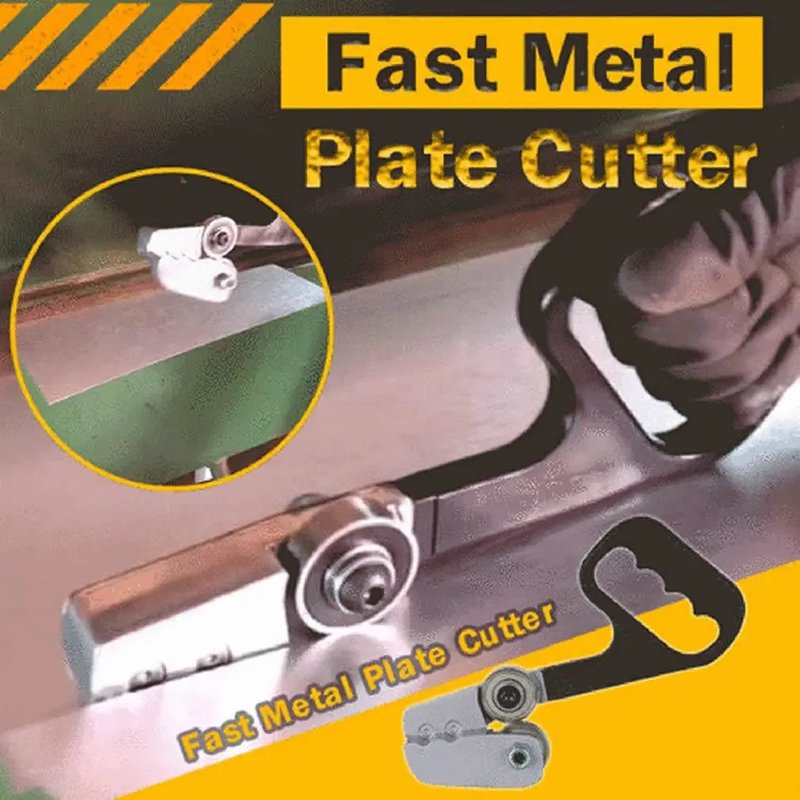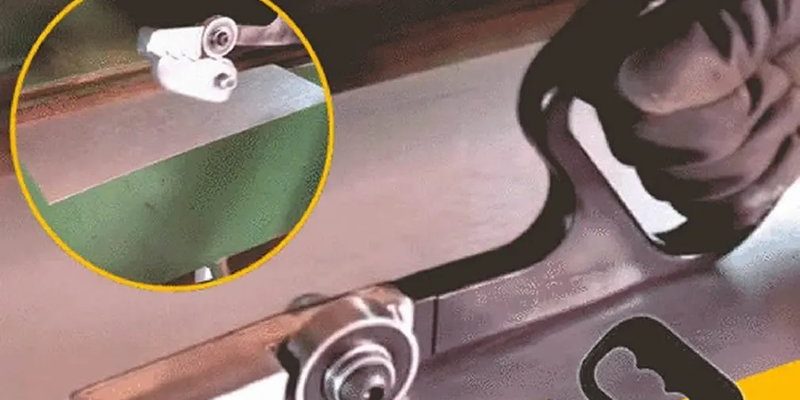
Cutting metal kick plates is a bit like slicing through a thick, stubborn loaf of bread. You need the right “knife,” steady hands, and a plan for clean, straight cuts. Sure, some brands sell kick plates “ready to fit,” but real life is rarely that simple—especially if you’re dealing with non-standard doors or want a custom look. That’s why knowing about the best tools for this job isn’t just nice—it’s essential.
So let’s dive in and talk about the real-world tools people use to cut metal kick plates, from the classic hand tools you might already have, to the power tools that make the job a breeze. I’ll walk you through what works, what to watch out for, and which tool might be your new favorite DIY sidekick.
Why the Right Tool Matters When Cutting Metal Kick Plates
Honestly, cutting a metal kick plate isn’t something you can just “wing.” The metal is usually aluminum or stainless steel, which means it’s tougher than it looks. Grab the wrong tool, and you’ll end up with jagged edges, warped metal, and possibly a ruined kick plate. Even worse? You could send metal shards flying or damage the door itself.
Here’s the thing: the right tool does more than make the job easier. It keeps you safe and gives your finished project a professional, factory-cut look. A well-cut kick plate fits flush with the door and doesn’t have sharp edges sticking out to catch on socks or scratch paint.
You might be tempted to use whatever’s in your toolbox. But trust me, taking a few minutes to pick the right tool is worth it. It saves time on cleanup, reduces the risk of mistakes, and leaves you with a result you’ll actually be proud of. Plus, most kick plates aren’t cheap—scrapping one because of a bad cut hurts your wallet as much as your pride.
Manual vs. Power Tools: What’s Best for Cutting Kick Plates?
You might be wondering if you really need to invest in a power tool, or if good old-fashioned elbow grease will work. Let me explain.
Manual tools (like tin snips or a hacksaw) are great if you only have one or two plates to cut. They’re quiet, affordable, and don’t require any setup. For thin aluminum kick plates—think of what you’d find on most residential doors—tin snips can handle the job. The downside? Manual cutting can get tiring, and it’s easy to veer off your line.
Power tools, like a jigsaw or an angle grinder, make sense if you’re dealing with thicker metal, tougher stainless steel, or have several plates to cut. They’ll zip through the job in a fraction of the time, and the cuts are usually cleaner—provided you keep a steady hand.
- Manual tools: Good for basic projects, quieter, more control, but more effort.
- Power tools: Faster, cleaner for tough jobs, but noisier, require more safety gear.
Bottom line: If you’re doing a single kick plate, manual tools could be all you need. But if you want professional results, or you’ll cut metal again, investing in the right power tool pays off.
Tin Snips: The Classic Choice for Cutting Thin Metal Kick Plates
Tin snips are the hand tool most people reach for when cutting metal kick plates—especially if the plate is made of aluminum or thin stainless steel. They look and feel a bit like heavy-duty scissors. You might not think they’re up for the job, but don’t underestimate them.
Using tin snips is straightforward. You just mark your cut line, grip the handles, and snip along the metal. The best part? You have control, which matters if your door’s corners or edges need careful shaping. Some brands even sell “aviation snips” with color-coded handles: red for left, green for right, yellow for straight cuts. Pick the one that matches your planned cut.
Here’s a tip: try to keep the snips perpendicular to the plate as you cut, and work slowly. Rushing leads to wavy lines or jagged edges. If your hand starts to cramp, take a break—no shame in that. And always wear gloves; tin snips can leave razor-sharp burrs.
The downside? Tin snips struggle with thicker kick plates, and cutting long, straight lines can get tricky. But for most home projects, they’re a solid, affordable choice that won’t let you down.
Using a Hacksaw for Clean, Straight Cuts
If you want more precision, or your kick plate is just a bit too thick for tin snips, a hacksaw is worth considering. Think of a hacksaw as the Swiss Army knife of metal cutting—it’s versatile, steady, and cuts a perfectly straight line.
To use one, you’ll need a metal-cutting blade (often 24-32 teeth per inch). Clamp the kick plate down to keep it from slipping, carefully mark your line with a marker or tape, and use long, slow strokes to slice through the metal. Feel free to take your time—accuracy beats speed here.
Honestly, hacksaws take more effort than most power tools, and your arm will know you’ve been working by the end. But the payoff is worth it. You get a smooth, even cut without risking warped metal. Just be prepared for a little cleanup, because hacksaws can leave metal shavings and rough edges behind.
The hacksaw really shines when you want a straight cut on a short piece of kick plate, or when noise is a concern (say, you’re working indoors or at night). Grab some sandpaper or a file afterward to smooth down any sharp bits, and your kick plate will look like it was cut to order.
Jigsaws: Extra Power for Cutting Metal Kick Plates
Let’s talk about jigsaws. These power tools make short work of nearly any kick plate, especially if you’re dealing with odd shapes or need to cut holes for hardware. A jigsaw is basically a small, handheld saw with a fast-moving thin blade. You’ll need to use a metal-cutting blade—don’t try this with a wood blade!
To cut a kick plate, clamp the plate securely to your work surface. Mark your line, then slowly guide the jigsaw along it. Go slow and steady; let the tool do the work. If you push too hard, the blade can bind or snap. That’s never fun.
You might notice some vibration, especially on thinner metal. That’s normal—just keep both hands on the tool and focus on your line. Jigsaws are great for curves or custom shapes, but they’re just as effective on straight lines if you use a guide. And the finished edge is usually cleaner than what you’d get with tin snips or a hacksaw.
The downside? Jigsaws are louder, kick up more metal dust, and you’ll need safety glasses. But for DIYers who plan to cut more than one kick plate, or just want an easier time, a jigsaw often becomes the go-to solution.
Angle Grinders: Speed and Power for Heavy-Duty Kick Plates
Angle grinders are the heavy hitters in the world of metal cutting. If you’ve got a thick stainless steel kick plate or need to trim several plates quickly, they’re hard to beat. Imagine a supercharged spinning disk—once you see one in action, you’ll see why pros love them.
To use an angle grinder, fit it with a thin metal-cutting wheel. Clamp the plate down (seriously, don’t skip this), and let the grinder’s weight guide the wheel along your mark. Keep sparks pointed away from you, and wear all the safety gear—gloves, goggles, even a long-sleeve shirt.
Here’s the good and bad: angle grinders cut fast and make very smooth, clean lines. On the flip side, they’re noisy, spew sparks, and take some getting used to if you’ve never handled one. If you slip, you could damage your kick plate—or worse, yourself.
For most homeowners, an angle grinder’s probably overkill unless you already have one or plan other metalwork projects. But if you want professional, perfectly straight cuts on tough plates, you’ll love what it can do.
Other Handy Tools: Dremels and Oscillating Multi-Tools
You might be surprised, but some smaller power tools—like a Dremel rotary tool or an oscillating multi-tool—can be life-savers for trimming or finishing kick plates. These aren’t the first tools most people think of, but they have their place.
A Dremel, with a metal-cutting wheel, is great for detailed trimming, cutting notches for hardware, or smoothing down rough edges. You won’t want to cut a whole kick plate with one (it’ll take forever), but for small jobs or cleanup, it’s fantastic.
Oscillating multi-tools work well for cuts in tight spots or when you need to trim a plate that’s already mounted. Pop in a metal blade, slide the tool along your mark, and let it work its way through the metal. It’s not as fast as a jigsaw or angle grinder, but it’s precise.
Both tools are nice to have around if you do a lot of DIY projects. They can’t replace the main “cutting” tools, but they’re perfect for those last little adjustments that make your project look polished.
How to Get Smooth, Safe Edges on Metal Kick Plates
Cutting the kick plate to size is only half the battle. You don’t want sharp edges waiting to catch a stray finger or scratch up a nice pair of pants. That’s why finishing the edges is just as important as the main cut.
Start by using a metal file or some medium-grit sandpaper. Work along the edge, rounding off any burrs or points left behind by your tool of choice. If you have a Dremel or similar rotary tool, a grinding attachment speeds up the process. Just go slow—the goal is smoothness, not removing a lot of material.
Here’s a quick rundown:
- File or sandpaper: Scrub edges with steady pressure until they’re dull, not sharp.
- Dremel/grinder: Use a gentle touch for a polished look.
- Vacuum/shake out: Get rid of metal dust and shavings before handling the finished plate.
Honestly, don’t rush through this step. Clean, smooth edges make your kick plate safer, easier to install, and look factory-finished. Plus, you’ll thank yourself later when you’re not digging out a metal splinter.
Choosing the Right Tool for Your Kick Plate Project
Let me wrap this up with a quick comparison. The “best” tool depends on what kind of kick plate you have, what tools are already in your garage, and how precise you want your cuts to be.
There’s no one-size-fits-all answer, but there’s definitely a best tool for your job.
| Tool | Best For | Pros | Cons |
| Tin snips | Thin aluminum/stainless plates, basic cuts | Affordable, quiet, easy to control | Hard on hands, wavy lines on long cuts |
| Hacksaw | Thicker plates, dead-straight lines | Precise, cheap, no power needed | Slow, arm fatigue, rough edges |
| Jigsaw | Curves, multiple plates, clean finish | Versatile, fast, smoother cuts | Noisy, needs power, blade can break |
| Angle grinder | Heavy-duty stainless, pro-quality work | Fastest, slickest finish | Messy, loud, safety risks |
| Dremel/Multi-tool | Detail work, touch-ups | Precise, great for edges | Slow for big cuts, best as a backup |
So, think about your door, the material of your kick plate, and how comfortable you feel with tools. If you’re unsure, start small—tin snips and a file will get you through most simple projects. For thicker plates or if you want to cut several kick plates to size, don’t be afraid to try a jigsaw or even an angle grinder (with the right safety gear).
Cutting metal kick plates to size might sound challenging, but with the right tool and a little patience, you can turn a plain door into something that looks custom-made. Take your time, measure twice, and always put safety first. Before you know it, you’ll have a kick plate that fits perfectly and looks like a pro installed it—because, for this job, that pro is you.
